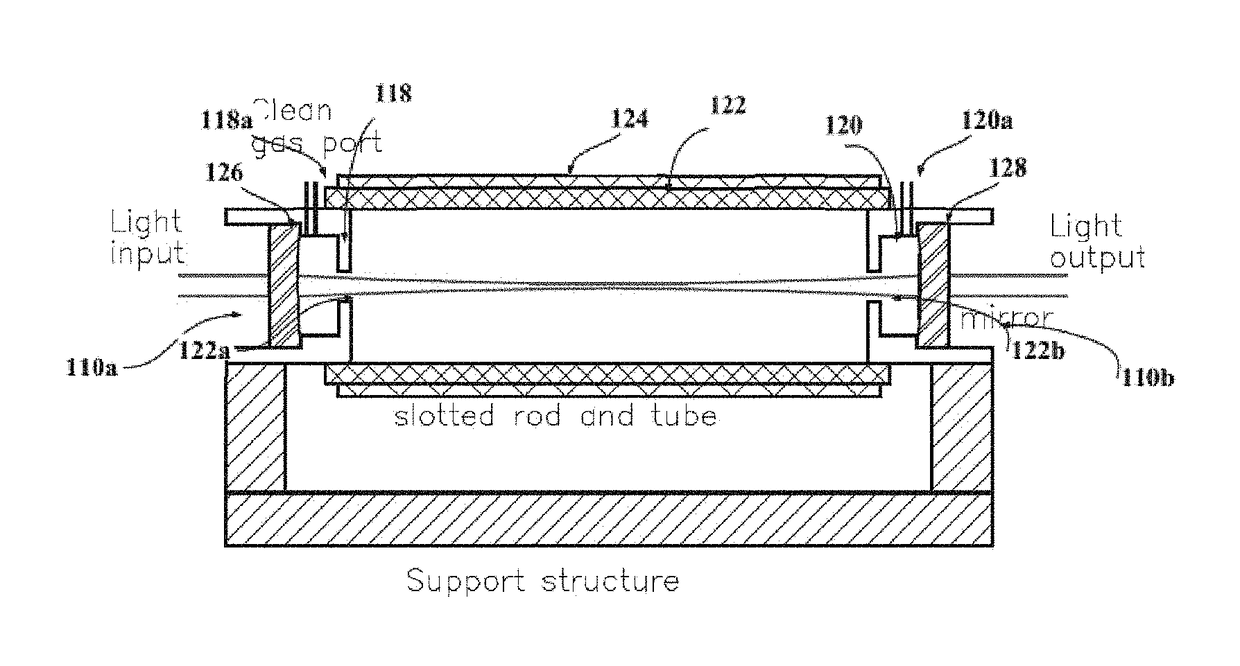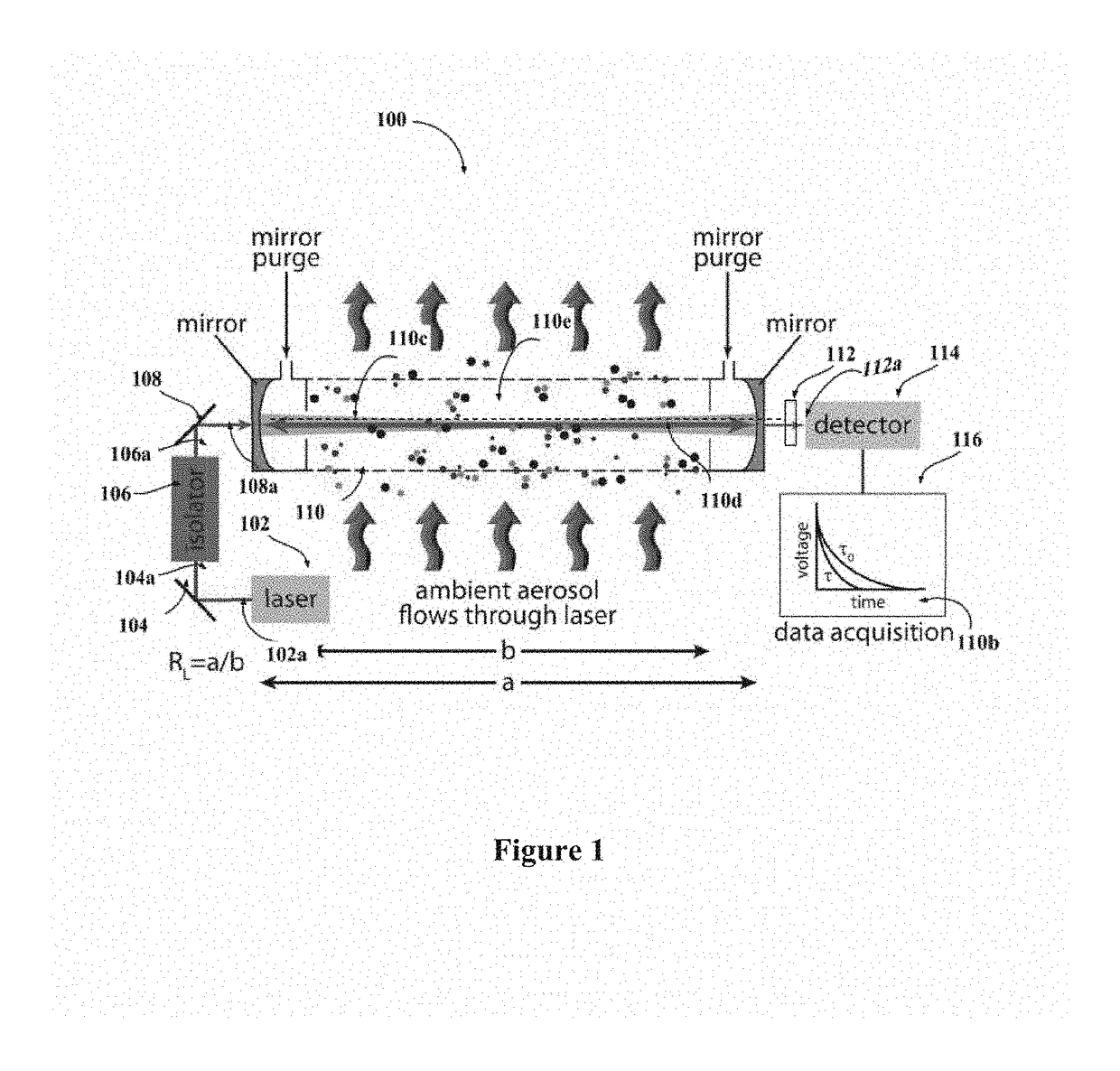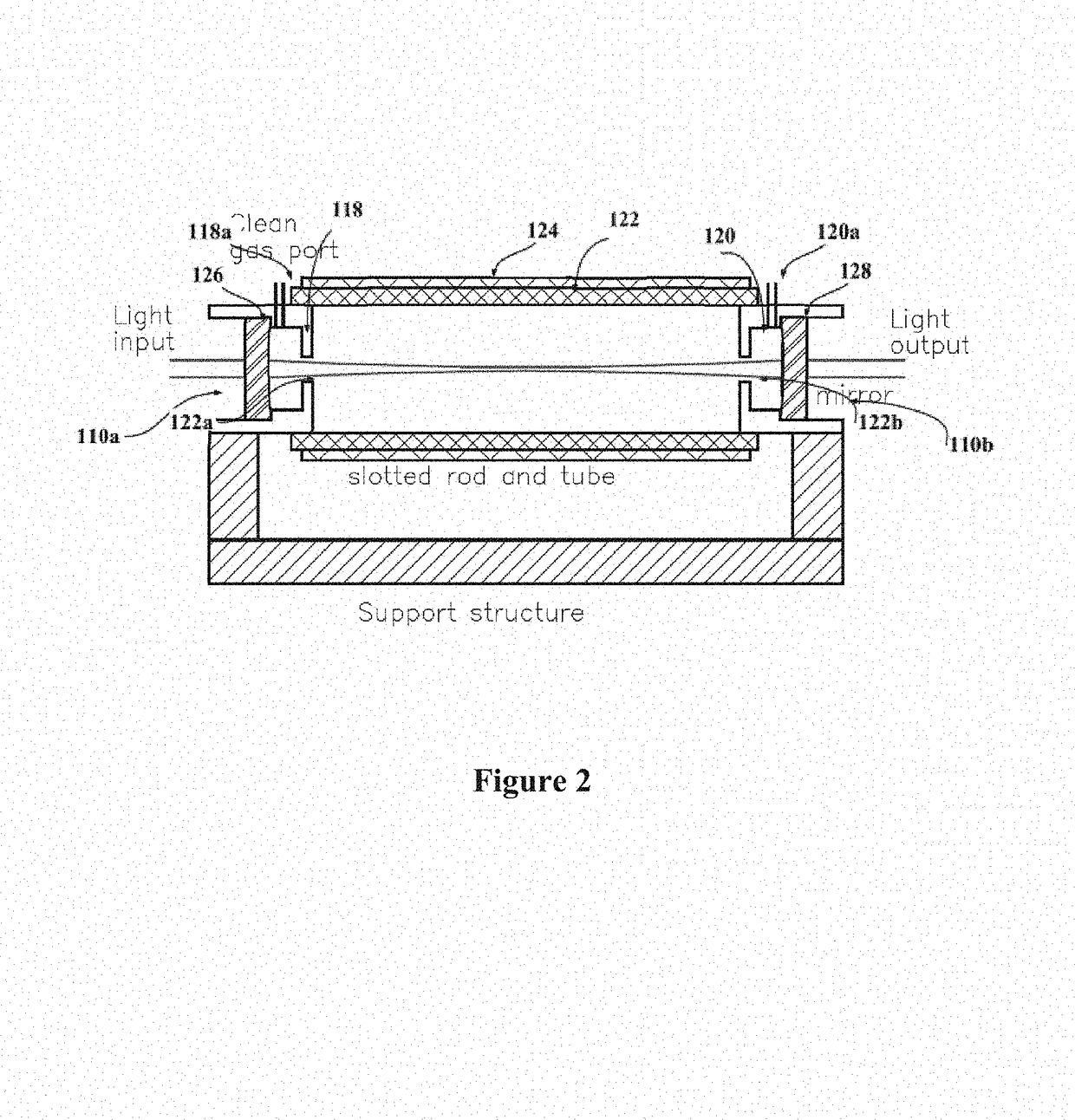System and method for measuring aerosol or trace species
a trace species and aerosol technology, applied in the field of absorption spectroscopy, can solve the problems of high uncertainty in aerosol radiative forcing, poor performance of existing crdss, and difficult to measure scattering at higher rh, so as to reduce turbulence
- Summary
- Abstract
- Description
- Claims
- Application Information
AI Technical Summary
Benefits of technology
Problems solved by technology
Method used
Image
Examples
example
[0062]An open-path cavity ring down spectrometer (OPCRDS) for use on a 300 meter high instrumented tower was designed and manufactured. The OPCRDS and a 3-wavelength nephelometer (TSI 3563, Shoreview, Minn.) were installed on a remote-controlled equipment carriage (2 m×3 m×2 m steel enclosure) atop a 300 m instrumented tower, at National Oceanic and Atmospheric Administration's (NOAA) Boulder Atmospheric Observatory (BAO), during a Front Range Air Pollution and Photochemistry Experiment (FRAPPE). These instruments profiled ambient extinction and scattering between ground level and 285 meters above ground level (AGL). The nephelometer was mounted inside of the carriage, and a 2 m long×0.025 m diameter aluminum tube extending 1 m outside the carriage served as the nephelometer inlet. The flow rate through the nephelometer was 30 L min−1. The inlet tubing was heated to 45° C. by wrapping the aluminum tubing with heat tape connected to a PID temperature controller; while this reduced th...
PUM
 Login to View More
Login to View More Abstract
Description
Claims
Application Information
 Login to View More
Login to View More - R&D
- Intellectual Property
- Life Sciences
- Materials
- Tech Scout
- Unparalleled Data Quality
- Higher Quality Content
- 60% Fewer Hallucinations
Browse by: Latest US Patents, China's latest patents, Technical Efficacy Thesaurus, Application Domain, Technology Topic, Popular Technical Reports.
© 2025 PatSnap. All rights reserved.Legal|Privacy policy|Modern Slavery Act Transparency Statement|Sitemap|About US| Contact US: help@patsnap.com



